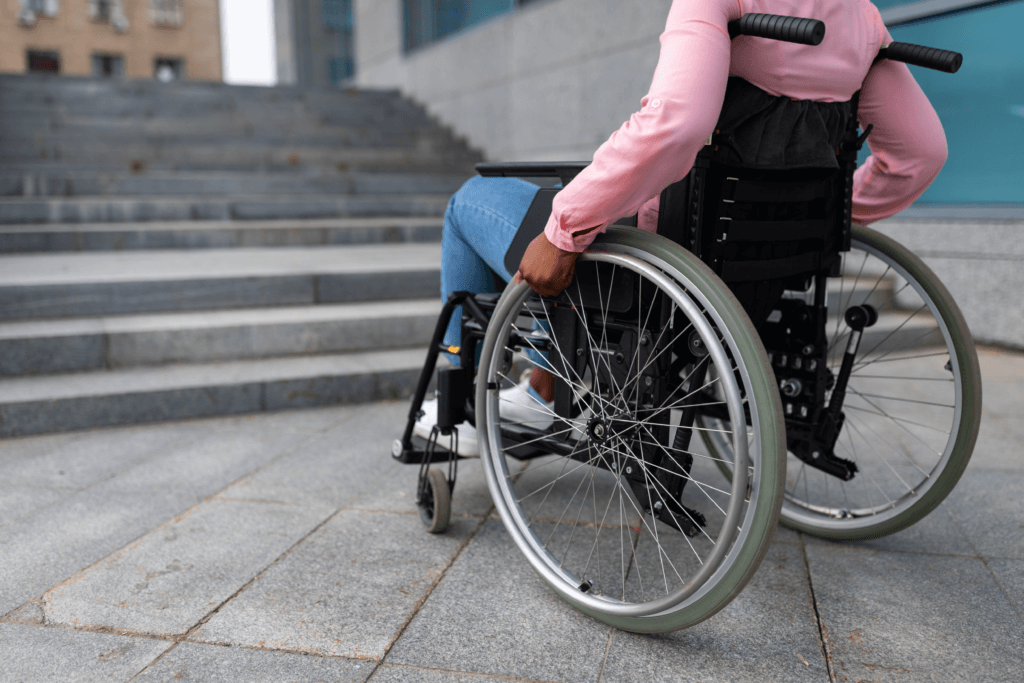News
Designing for Everyone: Why ADA Compliance Matters in Civil Infrastructure

Accessibility is more than a box to check—it’s a guiding principle in building inclusive, connected communities. The Americans with Disabilities Act (ADA) and the Minnesota Accessibility Code are the foundation for this work, ensuring that public infrastructure is usable by individuals of all abilities. From new construction to retrofit projects, these regulations govern everything from sidewalk slope to tactile warnings, curb ramp placement, and accessible routes through intersections and public spaces.
At PE Services, we understand that ADA compliance requires more than technical knowledge—it requires a commitment to thoughtful design, accurate construction, and attention to detail. Whether we’re reviewing construction plans, performing field inspections, or assisting with punchlist items at project closeout, accessibility is woven into every stage of our work.
Understanding the Standards
ADA design is governed by a detailed set of standards. These include guidelines for:
- Running and cross slopes of sidewalks and ramps
- Clear widths and landings for wheelchair access
- Curb ramp transitions at intersections and crossings
- Detectable warning surfaces for visually impaired pedestrians
- Vertical discontinuities, such as lips or uneven joints, which must be minimized
In Minnesota, the ADA standards are supplemented by the Minnesota Accessibility Code, which provides additional requirements specific to the state. Together, these codes create a robust framework to help ensure facilities are accessible to people who walk, roll, or use mobility aids.
Challenges in the Field
Achieving full compliance in the field is not always straightforward. Site constraints, grading limitations, or changes in elevation can create challenges that require creative, yet code-compliant, solutions. That’s why collaboration between engineers, inspectors, contractors, and owners is critical throughout design and construction.
Construction tolerances are tight, and minor deviations—like a slightly steep ramp or misaligned landing—can result in noncompliance, leading to rework or even liability issues. PE Services plays an active role in identifying these potential problems early, through field verification, detailed documentation, and a strong understanding of both the technical specs and real-world use.
Why It Matters
ADA-compliant infrastructure isn’t just for people with visible disabilities. Accessible design benefits a broad range of users, including older adults, parents with strollers, cyclists, delivery workers, and anyone with temporary injuries. Designing with accessibility in mind means designing for flexibility, independence, and dignity.
We believe public infrastructure should serve everyone. That belief shapes how we approach our work—from ADA ramp inspections and pedestrian crossings to roadway retrofits and public transit upgrades. It’s not about going above and beyond—it’s about doing it right.
Our Role
At PE Services, we support ADA compliance in a variety of ways:
- Field inspections of curb ramps and sidewalks during construction
- Coordination with designers and contractors to resolve field challenges
- Construction documentation and as-built verification
- Participation in pedestrian safety and accessibility planning
- Continuing education and training on current ADA/MAC guidelines
We’re proud to play a part in building accessible, welcoming spaces across Minnesota. And we’re always learning—because accessibility, like infrastructure, is an ongoing process of improvement.
